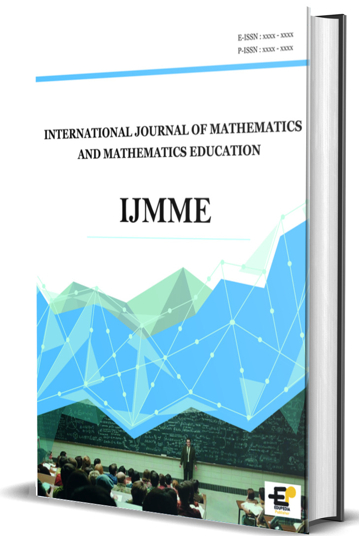Issues of International Journal of Mathematics and Mathematics Education
Journal
International Journal of Mathematics and Mathematics Education; IJMME
Editor
Nia Kania
Publisher
Edupedia Publisher
ISSNP
2988-0734
ISSNE
2986-4534
Frequency
Triannual
Article Processing Charges
50 USD (IDR 300.000)
Submission Charges
None
Journal Start Date
2023
Review Process
Double Blind Peer Review
Subjects
Mathematics; Education
Languages
English
Editorial Board URL
Author Instructions URL
Author Licence URL
Open Access
Yes
ARI Id
281
This page has been accessed 397 times.
Introduction
The International Journal of Mathematics and Mathematics Education (IJMME) is a peer-refereed open-access journal that has been established for the dissemination of state-of-the-art knowledge in the field of mathematics and mathematics education. The IJMME welcomes high-quality manuscripts resulting from researchers, scholars, teachers, and professionals from a research project in the scope of Mathematics and Mathematics Education.
All submitted manuscripts will be initially reviewed by editors and are then evaluated by a minimum of two International Reviewers through the double-blind review process. This is to ensure the quality of the published manuscripts in the journal. The manuscripts should be original, unpublished, and not in consideration for publication elsewhere at the time of submission to the IJMME.
Aims and Scope
International Journal of Mathematics and Mathematics Education (IJMME) invites academics and researchers who do original research in the fields of Mathematics and Mathematics Education including but not limited to:
Mathematics other relevant fields will also be considered:
Pure Mathematics: Algebra, Number Theory, Geometry, Analysis, Topology, Logic, Discrete Mathematics, Combinatorics, Graph Theory.
Applied Mathematics: Numerical Analysis, Mathematical Modelling, Dynamical Systems, Operational Research, Optimization, Financial Mathematics, Actuarial Mathematics, Computational Mathematics.
Statistics: Mathematical Statistics, Multivariate Statistics, Time Series Analysis & Forecasting, Statistical Methods, Probability, Nonparametric Statistics, Circular Statistics, Spatial Analysis, Predictive Analytics, Prescriptive Analytics.
Applied Statistics and Data Science: Big Data Analytics, Data Visualization, Statistical Modeling & Simulation, Data Mining, Machine Learning, Artificial Intelligence, Quality Control, Computational Statistics.
Mathematics Education other relevant fields will also be considered:
Innovative Mathematics Teaching and Learning applying various approaches such as Realistic Mathematics Education, Contextual Teaching and Learning, Project based Learning, Problem Based Learning, and many others.
Mathematics Ability includes the following abilities: reasoning, connection, communication, representation, and problem-solving. A paper is eligible for this topic if it comprehensively discusses those abilities.
Technology and Media in Mathematics Teaching and Learning the advance of information and communication technology (ICT) has been the concern of all human life, including in education.
Assessment in Mathematics such as Mathematical Literacy, Critical Thinking, HOTS.
Design/Development Research in Mathematics Education includes the following abilities STEM, STEAM, Ethnomathematics.
Contact Information
Jl. Raya Trajaya, Palasah, Majalengka, Jawa Barat, Indonesia
Principal Contact
Nia Kania
EDUPEDIA Publihser
niakania.edupedia@gmail.com
Support Contact
Zaenal Arifin
Phone +6282218560919
ijmme.edupedia.org@gmail.com
| Id | Volume & Issue | Year | No of Articles |
| Id | Volume & Issue | Year | No of Articles |
